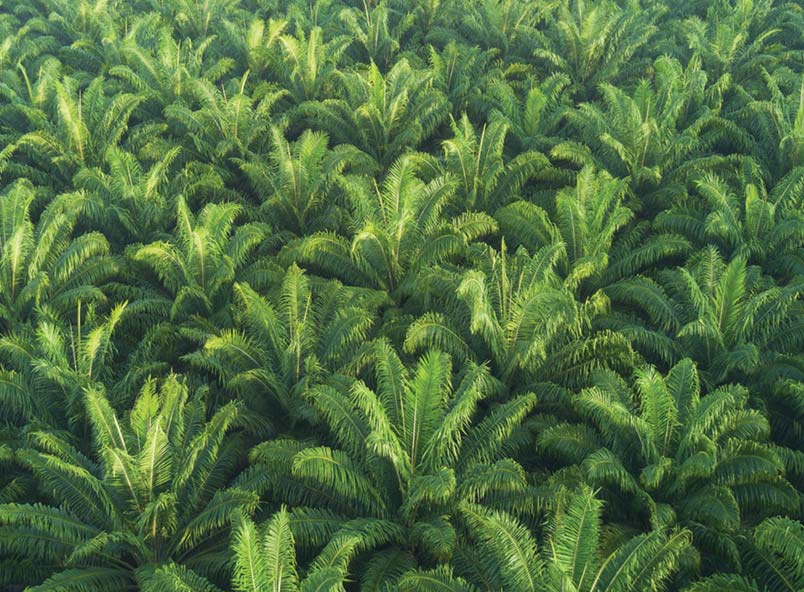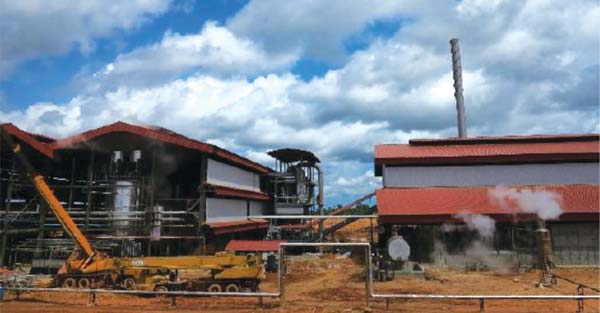



Two worlds
Sime Darby’s total planted area at the moment is just over 10,000 ha. Yields have been lower than hoped, a combination of longer dry seasons and the disruption caused by Ebola, which means the company still has to prioritise how best to invest in what are called the ‘Project Affected Communities’ and other areas. That annual commitment already runs to several hundred thousand dollars. As Rosli says: “The cake is small at the moment. But bear with us, be patient, and help us grow the size of the cake.”
Simon does his best to explain the dynamics of the global oil palm industry: “To sell our oil in Europe and the US, Sime Darby has to comply with all the rules of the Roundtable on Sustainable Palm Oil (RSPO) to get our certification – and of course to honour our commitment not to cut down forest areas with High Carbon Stock.
“If we go back on that, even in a poor country like Liberia, the international environmental NGOs like Greenpeace and the Rainforest Action Network will come down on us like a ton of bricks, undermining our hard-earned reputation and jeopardising our ability to sell to big companies like Nestlé and Unilever. And that wouldn’t help anybody, least of all people here in Liberia.”

SDPL’s new palm oil mill
This is not a world that the citizens of Falie can be expected to have any real understanding of. Bai Sembeh responds: “What do we know about High Carbon Stock? My mother didn’t tell me anything about carbon. But we do know everything we need to know about our forests, about the trees. So how can you tell us now what we should be doing with our lives, with our forests?”
The words expressed with characteristic passion, but no bitterness, are met with enthusiastic applause.
I can only sympathise with Simon and Rosli: there’s no reconciling these two worlds. On the one hand, it’s obviously crucially important to do everything we can to stop continuing deforestation around the world, and the oil palm industry has an important part to play in that process – even though its contribution to deforestation is actually much smaller than most ill-informed environmentalists in the West would have you believe.
On the other hand, the situation in Liberia is still so grim that it seems callous to be arguing the toss about the difference between cutting down young regenerating forest with roughly 35 tonnes of carbon/ha (which is apparently OK as far as the NGOs are concerned) and young regenerating forest with around 70 tonnes of carbon/ha (which is absolutely not OK as far as the NGOs are concerned).
Very little of the forest with which we’re surrounded in Falie is primary or old growth forest – it’s almost all been logged, worked over or cleared for shifting cultivation or charcoal burning for decades. But a lot of it, according to the detailed mapping that has now been done, definitely has more than 70 tonnes of carbon.
But here’s the thing: the best way (and I would argue the only way) of protecting what’s left of the really valuable forest (with high biodiversity value and high carbon), is to ensure that the community itself acts as the forest’s guardians. And they can only do that when they have some reasonable prospect of economic security, of properly paid jobs, of education for their children, of basic healthcare and so on.
Sitting in Falie, surrounded by dignified but increasingly desperate community leaders, this all seems so unanswerably obvious. But for people sitting in comfortable hotels in New York, London or even Kuala Lumpur and Jakarta, endlessly arguing in one committee or another about the finer details of one or another different approaches to HCS, it’s a truth that has yet to be seized hold of.